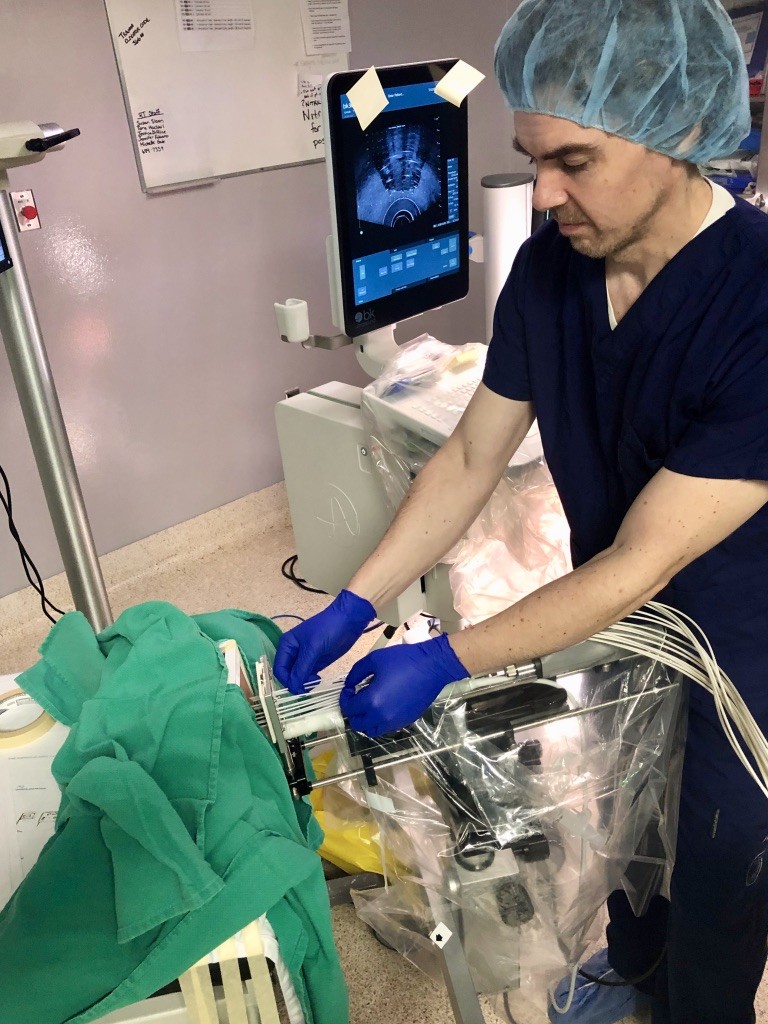Hospital now offers prostate brachytherapy as a local treatment option for prostate cancer patients
Published Monday, March 2, 2020

Dr. Marlon Hagerty, Radiation Oncologist, expects to perform 30 to 50 prostate brachytherapy treatments locally each year.
Prostate brachytherapy is now a local treatment option for prostate cancer patients after the first patient underwent treatment locally at the end of January.
“Prostate brachytherapy is an internal radiation treatment that has shown great results in recent clinical trials that confirm that it’s an effective treatment for prostate cancer,” said Dr. Marlon Hagerty, Radiation Oncologist with Regional Cancer Care Northwest at Thunder Bay Regional Health Sciences Centre. “Not only does this treatment option have a potentially higher cure rate, it also shows more acceptable side effects when compared to alternative treatments.”
Typical treatment options for prostate cancer include surgery, radiation and systemic drug therapy, and treatment often depends on the stage of cancer and patient choice. Locally, our regional cancer program treats around 100 new prostate cancer cases each year, and approximately 30 to 50 of these would be eligible for prostate brachytherapy. Until now, these men would need to travel to another cancer centre for treatment.
“Having this treatment option available here in Thunder Bay is a good option for men with prostate cancer in our region,” said Bill Everitt, a prostate cancer survivor and member of the Thunder Bay Prostate Cancer Support Group and a Patient and Family Advisor with our Regional Cancer Program. Having a very broad experience with cancer treatments himself, Everitt says that this is a step toward having the best prostate cancer treatment available to men across our region. “Prior to this, men who wanted this treatment had to go to Toronto. This wasn’t always convenient for all patients, so sometimes they had to take a different treatment option. I look forward to this new option being an important part of the toolbox that the people at our cancer program can access.”
This treatment, like many others at our Hospital, is proudly supported by the Health Sciences Foundation. “It is always so rewarding to contribute to equipment at our Hospital that eliminates the need for people to travel for medical procedures,” says Barry Streib, Health Sciences Foundation Board Director and Grant Committee member. “Thanks to the caring and generosity of our donors, the Health Sciences Foundation was able to donate $60,000 towards the purchase of the ultrasound system that is required to provide this treatment option.”
When asked about the treatment’s details, Dr. Hagerty explained that “the whole procedure takes approximately two to three hours from start to finish, but the actual radiation portion of the treatment takes approximately 20 minutes. It is done in an operating room, and there are a number of health professionals in the room, including myself, a physicist and radiation therapists. The treatment itself involves inserting needles into the prostate using ultrasound guided imaging. This allows us to isolate the prostate so that we can provide radiation treatments directly to it using a radioactive bead that goes through each of the needles for a specified period of time.”
Prostate cancer is the most common cancer type found in men, with 1 in 9 Canadian men being diagnosed with it in their lifetime and 8,414 new cases of prostate cancer diagnosed in Ontario in 2016.